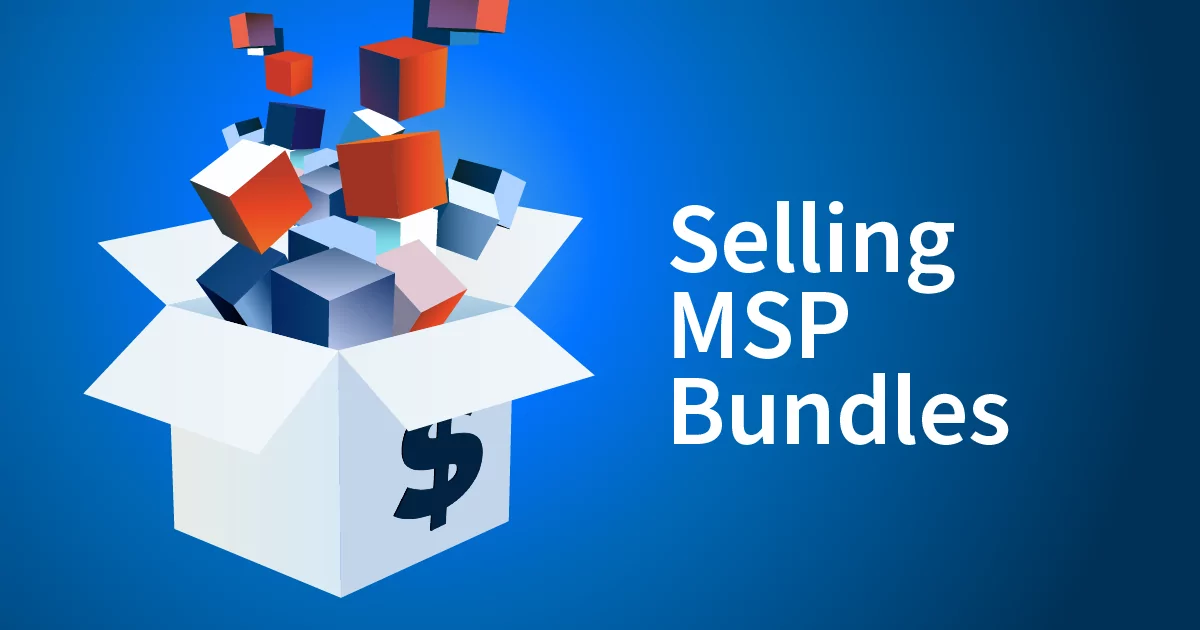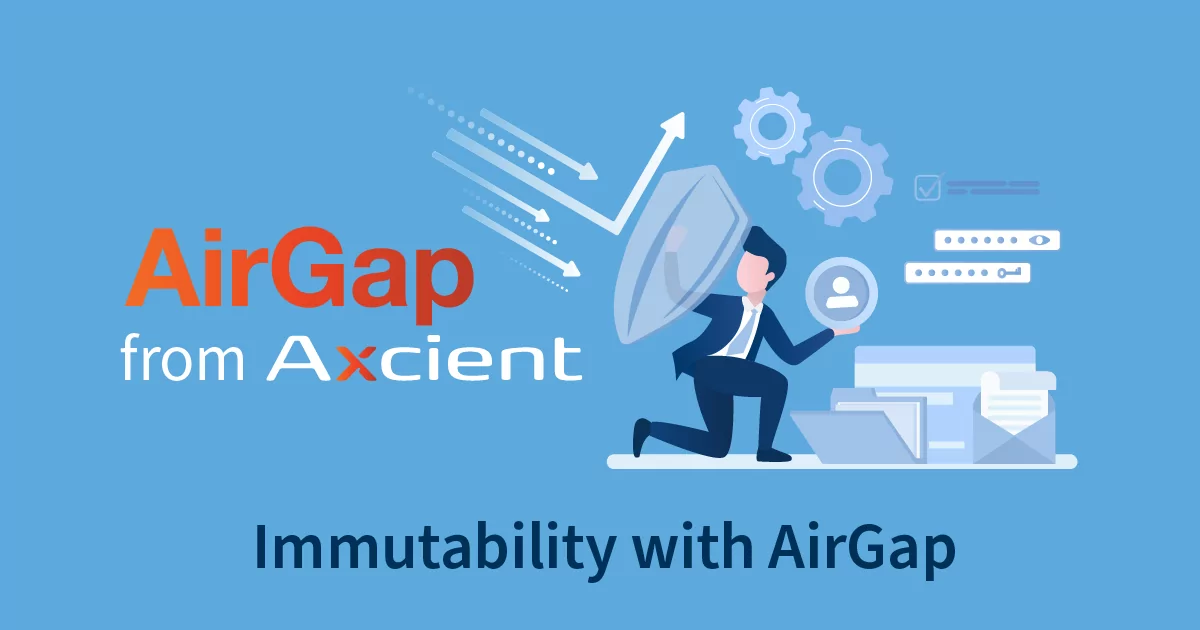
Axcient Expands BCDR with x360Recover for macOS
As SMB needs change, MSPs must respond accordingly with robust security features necessary to keep businesses moving. For that to happen, MSPs need a solutions provider who enables that capability. Axcient is an MSP-exclusive vendor constantly developing, upgrading, and launching innovative tools to meet today’s cybersecurity needs.
Our latest product enhancement for x360Recover, Axcient’s comprehensive business continuity and disaster recovery (BCDR) solution, is support for macOS. Across clients, MSPs require IT flexibility to meet various use cases with consolidated efficiency. With Windows use down and macOS and Linux use up year-over-year, Axcient is responding by integrating macOS support for x360Recover – in addition to Windows and Linux.
Similar to how we rolled out x360Recover for Linux, we invited interested MSPs to get early access to the enhanced features to help us refine and respond to feedback before launching general availability. Keep reading for some quick Q&As answers from Leif Fortson, Axcient’s Director of Product for the x360 Platform, to see why this enhancement is so exciting, what it does for MSPs, and how to be one of the first to implement it.
Table of Contents
Why is Axcient supporting macOS now?
Over the last year, Axcient’s product development team has researched and discussed with MSPs their needs regarding macOS. In addition to our partners telling us they need macOS support, we also learned why they want it and how it should best be delivered.
#1: It’s one of the top enhancements requested by MSP partners.
Axcient invites partners to submit feature requests regularly so we understand what our MSPs need and where to prioritize them in our roadmap. Support for macOS within the Axcient community mirrors what we see across IT providers as client preferences move away from Windows and toward macOS.
According to JumpCloud’s State of IT 2024, the average device type breakdown for organizations is Windows 60% (down from 64% in April 2023), macOS 22% (up from 20%), and Linux 22% (up from 16%). Additionally, macOS device use is expected to see the highest percentage increase, with 41% of businesses anticipating a spike in macOS use (up from 26%), 56% believe Windows will use increase (up from 46%), and 31% predict Linux use to grow (up from 26%).
#2: It helps MSPs win clients.
The more you can protect SMBs, the more business you will win. Not having a solution to back up macOS is a big red flag to many companies that rely on the operating system or are thinking of moving that way. MSPs must say, “Yes, we do that” more often to grow the business with enhanced services that meet broader client demands.
Through our research, Axcient found that, typically, all SMBs have some number of macOS agents – whether it’s one, 10, or hundreds. Additionally, some clients may rely entirely on macOS and demand a macOS Power User. It’s up to MSPs to adequately respond to both of these demands to build trust and lasting relationships with clients.
#3: It doesn’t require an additional backup and recovery solution.
Stack complexity is MSP kryptonite. It drives monthly recurring costs for additional labor, training, management, and maintenance of each product and vendor. Uncontrolled overhead cuts directly into an MSP revenue and profit potential while consolidating on all-in-one solutions, like x360Recover, enables efficiency, consolidation, and ease of use. Why have a different product and vendor for Windows, Linux, and macOS when you can support all three within Axcient x360Recover?
What are the features and capabilities of x360Recover for macOS?
If you’re unfamiliar with x360Recover, Axcient’s BCDR solution is designed specifically for MSPs and their SMB clients. Unified data security and unmatched flexibility allow MSPs to solve more use cases with a single solution than ever before, including cloud and appliance-based deployment options. Leveraging proprietary Chain-Free backup technology, built-in and always-on security features, immutable data, and pooled storage at a flat fee, MSPs can now also support macOS – all within x360Recover.
- Snapshot-based backups of files and folders on Apple File System (APFS) volumes.
- File and folder (mount) recovery via web browser and file transfer protocol (FTP).
- Application-based backups.
- Direct-to-Cloud (hardware-free) backups.
- Endpoint manager support.
- Automated agent upgrades.
- No system reboots are required for installation or uninstallation of the agent.
- Secure, encrypted transport of backup data over Transport Layer Security (TLS) 1.2+.
- Zstandard (ZSTD) compression of data transmitted during backup.
- Agent access password protection lets you add additional password security while in the vault or appliance.
What are the device requirements for x360Recover for macOS?
While x360Recover is hardware-agnostic with BYOD, there are additional requirements for x360Recover for macOS:
- x360Recover appliance and vault running version 12.6.0 or higher.
- x360Cloud agent version 3.7.0 or higher.
- macOS 12 (Monterey) or newer.
- macOS running on Intel/AMD x64 or ARM x64 CPU.
- Files must be stored on the locally attached APFS formatted volumes because we use the native file system snapshots. (Even though it’s file on folder backups, they will be consistent backups being actively written to.)
- Full disk access (once for automatic feature updates and never again).
- 4GB+ system RAM.
- 1GB ethernet or faster network connection (in appliance mode).
- 500Kbps or faster internet upload speed (in Direct-to-Cloud mode).
What’s not supported and why?
- Image-based backup, recovery, and virtualization are impossible because the Apple end-user agreement explicitly forbids virtualizing Mac devices on non-Mac hardware, so Axcient cannot legally support it.
- Bare metal restore is inherently incompatible with image-based backups as file folders only – it must be on Apple hardware to virtualize.
- Local Cache is a block-based data caching mechanism that is incompatible with file folder backups.
- Apple prohibits virtual disk exports and iSCSI exports.
Why not back up with Time Machine?
Time Machine is the backup mechanism of macOS, but these backups are just file and folder backups. They cannot do image-based restores, so be wary of vendors who don’t have agents and rely on insufficient tools like Time Machine instead. It’s a much less capable type of backup because you don’t have any reporting or control over it. These backups don’t show up in your consoles—they’re purely within macOS, meaning it’s up to users to monitor them.
How does x360Recover for macOS work inside the x360 Portal?
Here are some high-level operational notes to keep in mind as you view x360Recover for macOS:
- It installs as a service, so it’s always running. Besides some of the full disk access controls, nothing in the UI or the Mac shows that the agent is running.
- It backs up multiple users by default, including everything in the user’s folder.
- It is a fully integrated agent. Like our Windows and Linux agents, the macOS agent shows up in the same places on your vault and in Recovery Manager with the same features and options you’re used to.
- It only takes minutes to install the agent (sometimes just seconds).
After the agent is installed, you must enable full disk access, or jobs will fail each time the agent attempts a backup.

When that’s complete, go to your Protected Systems and locate your macOS-protected system to schedule a full backup.

Click Schedule Now, run a full backup, and the job will continue successfully.


If you want to recover a file folder while on a protected system, you need the particular snapshot you want to mount from. Find the snapshot you want and click Mount.

Once mounted, go into the particular client and user to get the files necessary for recovery.

You can also see the agent within Axcient’s Recover Manager. Login to the x360Portal and select x360Recover to see the System Details on the dashboard view.

Scroll down to confirm that the Mac device you’re using is being protected just like any other system, whether it’s a Linux or Windows machine. For this example, within “LeifHome,” you can see that backups were determined to be healthy at the latest job. From there, you can click directly to the vault for each device.

How much does it cost?
We are still finalizing pricing, but x360Recover for macOS will be billed similarly to a workstation, and pooled data allotments can be reviewed in our Fair Use Policy. Access will be pulled into the protected systems partners already use for client management.
How will x360Recover for macOS mature?
During these middle stages of launching a new capability, Axcient has been focused on the nuts and bolts of security. After that, the agent will continue to be enhanced based on early-access feedback and usage as time passes – just like all Axcient products. Here are some of the features we’re looking forward to:
- Mass deployments to your RMM tool using the privacy protection policy control (PPPC) files. Axcient has a PPPC profile template for gaining documentation from early users to help navigate the custom methods for creating and managing PPPC files and folders within different RMM tools. We will make valuable Axcient Knowledgebase articles specific to RMM tools to give MSPs instructions for deployment and dependencies across use cases.
- PSA integration with ConnectWise Asio will be supported in the Mac agent in the future. For now, PSA integrations are the same as with Windows and Linux – monitoring and alerts, SLA thresholds, and Recover Manager are all familiar.
- Full disk enablement assistance will be added to the installer to give users prompts and instructions to ensure this critical task is completed before backups start running. Unfortunately, the macOS functionality design prohibits automatic full disk enablement, so it is impossible at this point. Additionally, there isn’t any API call that can be used to request a pop-up reminder, but don’t worry, we’re on it.
- Network throttling will be released for macOS using the same policies applied to Windows and Linux agents.
- Recovery deployment through the agent means you don’t have to be on the protected system, helping to simplify labor needs and reduce administrative overhead and technical debt.
How do I get x360Recover for macOS?
If you’re an existing partner, the macOS agent can be deployed right in your x360 Portal. We can’t wait to hear what you think! Thank you for helping Axcient create better BCDR solutions for MSPs.
x360Recover for macOS in our Knowledgebase
Watch the x360Recover for macOS webinar recording
Author
Related posts
How well could you sleep with reliable cloud-based backups and recovery?
Take a deep dive into Axcient’s proprietary, automated security features to see how we’re ensuring uninterrupted business continuity — no matter what:




